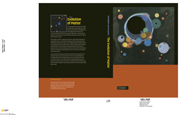Book contents
- Frontmatter
- Contents
- Introduction
- Part I The elements
- 1 Isotopes: weights and abundances
- 2 Introduction to the Universe: the baryonic matter
- 3 Element and isotope abundances: reference collection
- 4 Cosmological nucleosynthesis: production of H and He
- 5 Stellar nucleosynthesis: lower-mass stars and the s-process
- 6 Stellar nucleosynthesis: r- and associated processes
- 7 Timing of stellar nucleosynthesis
- 8 Chemical evolution of the Galaxy
- Part II Early solar system: nebula formation, evolution and lifetime
- Part III Accretion of the Earth
- Part IV Global evolution of the Earth
- References
- Glossary
- Abbreviations
- Meteorites, rocks and minerals
- Index
4 - Cosmological nucleosynthesis: production of H and He
Published online by Cambridge University Press: 04 September 2009
- Frontmatter
- Contents
- Introduction
- Part I The elements
- 1 Isotopes: weights and abundances
- 2 Introduction to the Universe: the baryonic matter
- 3 Element and isotope abundances: reference collection
- 4 Cosmological nucleosynthesis: production of H and He
- 5 Stellar nucleosynthesis: lower-mass stars and the s-process
- 6 Stellar nucleosynthesis: r- and associated processes
- 7 Timing of stellar nucleosynthesis
- 8 Chemical evolution of the Galaxy
- Part II Early solar system: nebula formation, evolution and lifetime
- Part III Accretion of the Earth
- Part IV Global evolution of the Earth
- References
- Glossary
- Abbreviations
- Meteorites, rocks and minerals
- Index
Summary
The expanding Universe and the Big Bang hypothesis
Friedmann (1922) was the first to postulate the model of an expanding Universe that originated in one explosion-like event. Soon afterwards Hubble (1929) discovered the relationship between the redshifts, due to the Doppler effect, in the spectra of distant stars, galaxies or galactic clusters and the distances to these objects: the further the object the larger the redshift, i.e. the greater the outward velocity (see Section 4.3). These relationships were considered as the first important confirmation of Friedmann's model, which is now generally accepted.
Later, further supporting evidence was found. The uniform He/H ratio in astrophysical objects with low metallicity, discussed in Section 3.1, was shown to be identical to that predicted by the Big Bang nucleosynthesis (BBN) model. Further, important support for the Big Bang hypothesis was the observation of the cosmic microwave background radiation (Penzias and Wilson, 1965), which had been predicted by Gamow's Big Bang model. From recent high-precision satellite-based measurements of this radiation, several important cosmological parameters including the Hubble parameter and the primeval D/H ratio have been inferred, and these are in excellent agreement with the values actually observed (Spergel et al., 2003). Also, all independent estimates of the age of BBN and of the most ancient objects formed in the Galaxy are remarkably consistent (Sections 4.3 and 7.2).
- Type
- Chapter
- Information
- The Evolution of MatterFrom the Big Bang to the Present Day, pp. 44 - 51Publisher: Cambridge University PressPrint publication year: 2008



